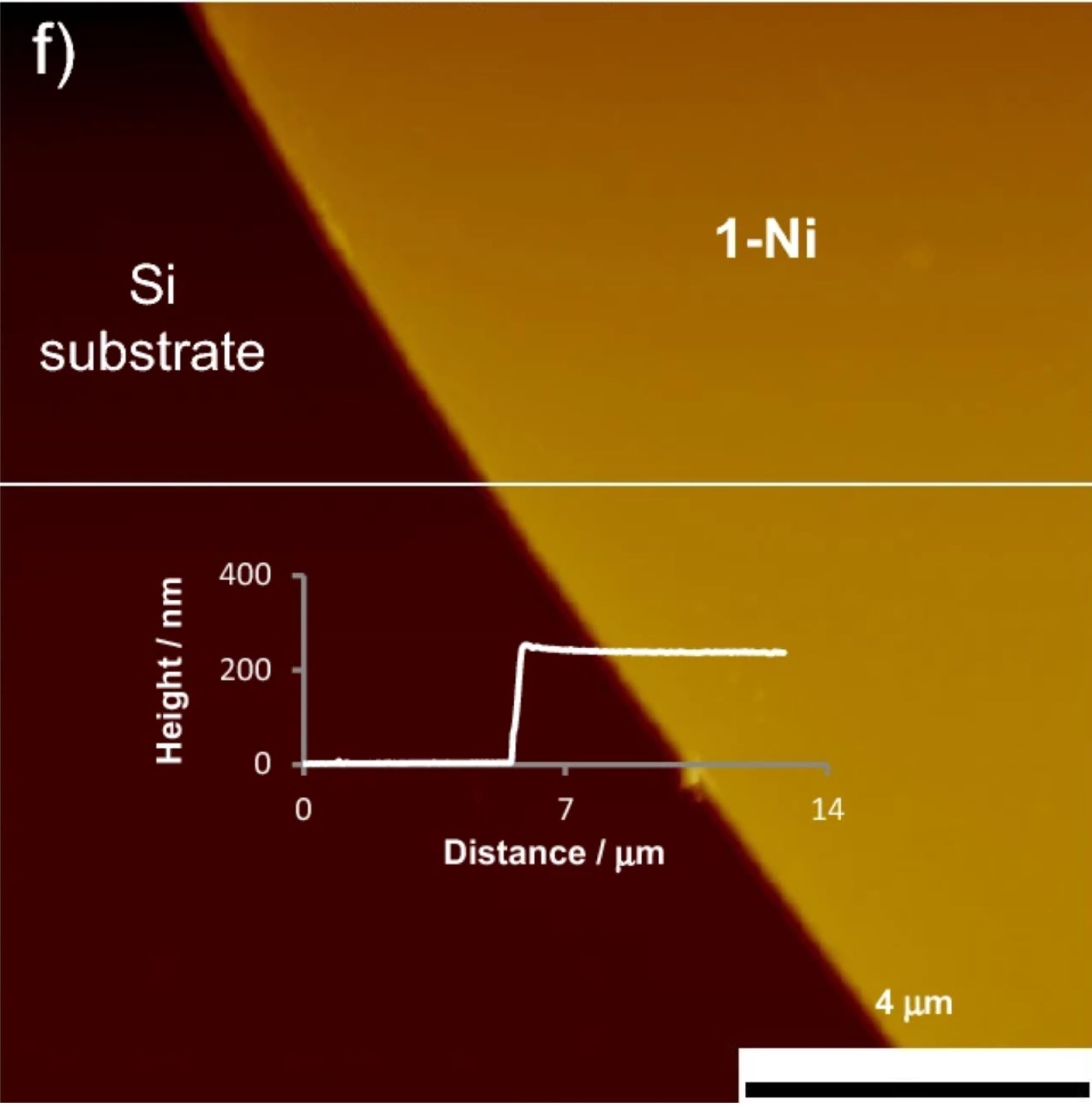Since the discovery of graphene, extensive studies have revealed various types of novel two-dimensional polymers such as transition metal dichalcogenides, covalent organic frameworks, and carbon allotropes. *
Coordination nanosheets (CONASHs) are bottom-up-type, two-dimensional polymers woven through coordination reactions of molecular, ionic, or atomic components. *
Due to the diversity of their chemical and physical properties arising from an infinite variety of ligand and metal ions, CONASHs have attracted considerable attention. Functional CONASHs tethering 1,2-dithiolate and its analogues, carboxylate, dipyrromethine, and polypyridyl ligands have been developed. *
In the article “A Bis(terpyridine)nickel(II)-Based Coordination Nanosheet: A Redox-Active Material with Flexibility and Transparency” Kenji Takada, Hiroaki Maeda and Hiroshi Nishihara report a novel functional bis(terpyridine)metal(II) complex coordination nanosheet (CONASH) comprising a three-armed terpyridine ligand and Ni2+ ion. *
The colourless Ni-terpyridine CONASH was synthesized by the method of interfacial coordination reaction at an interface of two immiscible liquids. *
The synthesized CONASH was characterized with various microscopic observations such as TEM, SEM, and AFM, and spectroscopic measurements such as XPS, IR, SEM/EDS, and UV–Vis spectroscopy. *
The bis(terpyridine)nickel(II) complex nanosheet demonstrated redox-activity stemming from terpyridine complexes without distinctive colour change. Thus, the bis(terpyridine)nickel(II) coordination nanosheet is a potential redox-active material with colourlessness and flexibility, necessary for future transparent electronics.*
NANOSENSORS™ Silicon PointProbe® Plus PPP-NCL AFM probes (long cantilever – typical length 225 µm, typical force constant 48 N/m, typical resonance frequency 190 kHz) in high amplitude mode (Tapping Mode) under ambient conditions were used for the characterization by Atomic Force Microscopy (AFM). *

Fig. 2f from Kenji Takada et al. 2024 “A Bis(terpyridine)nickel(II)-Based Coordination Nanosheet: A Redox-Active Material with Flexibility and Transparency”
Synthesis and morphology identification of 1-Ni.
f Topographic AFM image of 1-Ni on a flat Si substrate and the cross-sectional analysis inset
For the full figure please refer to the cited article
*Kenji Takada, Hiroaki Maeda and Hiroshi Nishihara
A Bis(terpyridine)nickel(II)-Based Coordination Nanosheet: A Redox-Active Material with Flexibility and Transparency
Journal of Inorganic and Organometallic Polymers and Materials, Volume 34, pages 2990–2997, (2024)
DOI: https://doi.org/10.1007/s10904-023-02921-4
The article “A Bis(terpyridine)nickel(II)-Based Coordination Nanosheet: A Redox-Active Material with Flexibility and Transparency” by Kenji Takada, Hiroaki Maeda and Hiroshi Nishihara is licensed under a Creative Commons Attribution 4.0 International License, which permits use, sharing, adaptation, distribution and reproduction in any medium or format, as long as you give appropriate credit to the original author(s) and the source, provide a link to the Creative Commons license, and indicate if changes were made. The images or other third-party material in this article are included in the article’s Creative Commons license, unless indicated otherwise in a credit line to the material. If material is not included in the article’s Creative Commons license and your intended use is not permitted by statutory regulation or exceeds the permitted use, you will need to obtain permission directly from the copyright holder. To view a copy of this license, visit https://creativecommons.org/licenses/by/4.0/.